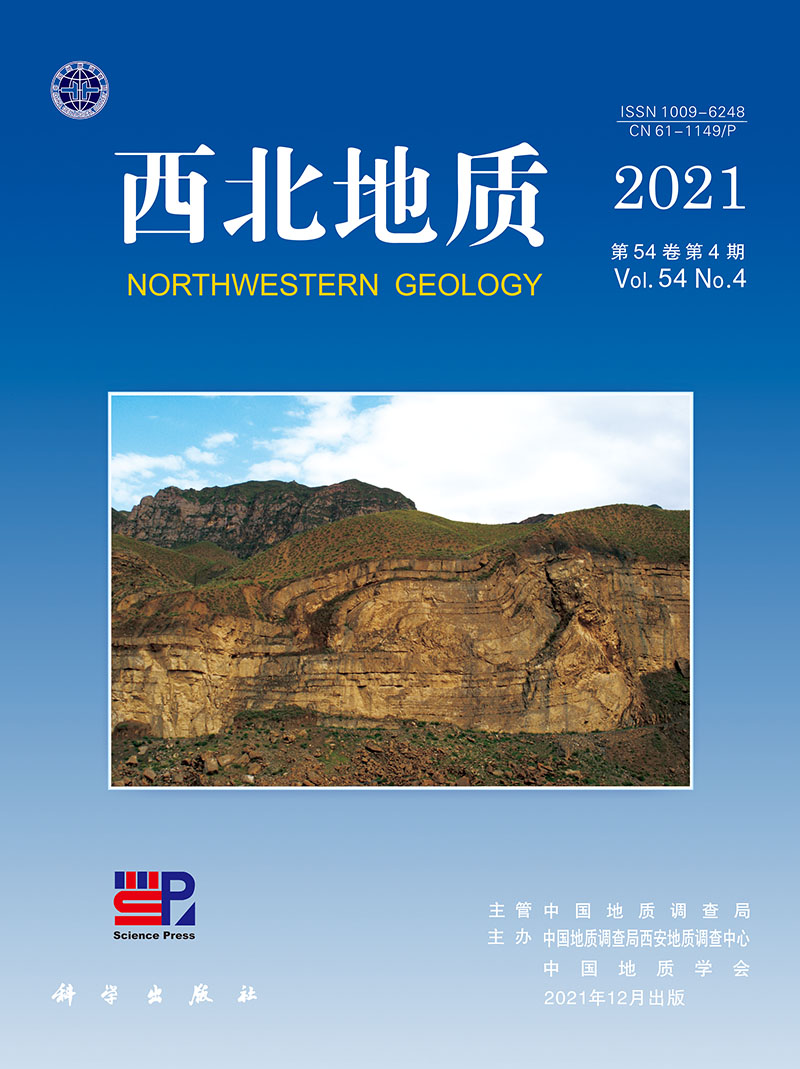|
武立, 宋彦辉, 唐亚明.吉县城北沟泥石流风险评价及治理措施研究[D]. 西安:长安大学, 2018.
Google Scholar
|
|
WU Li, SONG Yanhui, TANG Yaming.Research on Risk Assessment and Control Measures of Debris Flow in Beigou, Jixian County[D]. Xi'an:Chang'an University, 2018.
Google Scholar
|
|
唐川, 刘希林, 朱静.泥石流堆积泛滥区危险度的评价与应用[J]. 自然灾害学报, 1993, 2(4):79-84.
Google Scholar
|
|
TANG Chuan, LIU Xilin, ZHU Jing.Evaluation and application of the risk degree of debris flow accumulation and flooding area[J]. Journal of Natural Disasters, 1993, 2(4):79-84.
Google Scholar
|
|
唐川, 周钜乾, 朱静, 等.泥石流堆积扇危险度分区评价的数值模拟研究[J]. 灾害学, 1994, 9(4):7-13.
Google Scholar
|
|
TANG Chuan, ZHOU Juqian, ZHU Jing, et al. Numerical simulation study on the regional evaluation of the risk of debris flow accumulation fan[J]. Catastrophe Science, 1994, 9(4):7-13.
Google Scholar
|
|
唐亚明, 殷跃平.陕北黄土滑坡风险评价及监测预警技术方法研究[D]. 北京:中国地质大学, 2012.
Google Scholar
|
|
TANG Yaming, YIN Yueping.Research on risk assessment and monitoring and early warning technology methods for loess landslides in northern Shaanxi[D]. Beijing:China University of Geosciences, 2012.
Google Scholar
|
|
罗元华.泥石流堆积区灾害破坏损失评价方法[J]. 中国地质矿产经济, 2000, 13(4):33-36.
Google Scholar
|
|
LUO Yuanhua.Evaluation method of disaster damage loss in debris flow accumulation area[J]. Chinese Geology and Mineral Economics, 2000, 13(4):33-36.
Google Scholar
|
|
尚志海.泥石流灾害综合风险评估及可接受风险研究[D]. 广州:中山大学, 2012.
Google Scholar
|
|
SHANG Zhihai.Research on Comprehensive Risk Assessment and Acceptable Risk of Debris Flow Disasters[D]. Guangzhou:Sun Yat-sen University, 2012.
Google Scholar
|
|
中华人民共和国国家统计局.中国统计年鉴-2017[M]. 北京:中国统计出版社, 2017.
Google Scholar
|
|
The National Bureau of Statistics of the People's Republic of China.China Statistical Yearbook-2017[M]. Beijing:China Statistics Press 2017.
Google Scholar
|
|
唐亚明, 魏洁, 贺生军.舟曲三眼峪泥石流风险减缓对策探讨[J]. 西北地质, 2011, 44(3):112-113.
Google Scholar
|
|
TANG Yaming, WEI Jie, HE Shengjun.Discussion on risk mitigation measures for debris flow in Sanyanyu, Zhouqu[J]. Northwestern Geology, 2011, 44(3):112-113.
Google Scholar
|
|
唐亚明, 冯卫, 李政国.滑坡风险管理综述[J]. 灾害学, 2015, 30(1):143-145.
Google Scholar
|
|
TANG Yaming, FENG Wei, LI Zhengguo.Overview of Landslide Risk Management[J]. Catastrophe Science, 2015, 30(1):143-145.
Google Scholar
|
|
台州市人民政府办公室.台州市人民政府办公室关于印发台州市地质灾害风险管控专项行动实施方案的通知[R], 2019.
Google Scholar
|
|
唐亚明, 张茂省, 魏新平.舟曲三眼峪泥石流监测预警方案设计[J]. 西北地质, 2011, 44(3):96.
Google Scholar
|
|
TANG Yaming, ZHANG Maosheng, WEI Xinping.Design of monitoring and early warning schemes for debris flow in Sanyanyu, Zhouqu[J]. Northwestern Geology, 2011, 44(3):96.
Google Scholar
|
|
国土资源部.DZT0220-2006泥石流灾害防治工程勘查规范[S], 2006.
Google Scholar
|
|
国土资源部.DZ/T0239-2004泥石流防治工程设计规范[S], 2004.
Google Scholar
|
|
水电水利规划设计总院.水电工程设计概算编制规定(2013年版)[M]. 北京:中国电力出版社, 2014.
Google Scholar
|
|
General Institute of Hydropower and Water Conservancy Planning and Design.Provisions for the Compilation of Hydropower Engineering Design Budget (2013 Edition)[M]. Beijing:China Electric Power Press, 2014.
Google Scholar
|
|
水电水利规划设计总院.水电工程费用构成及概(估)算费用标准(2013年版)[M]. 北京:中国电力出版社, 2014.
Google Scholar
|
|
General Institute of Hydropower and Water Conservancy Planning and Design.Hydropower project cost composition and cost estimate (estimated) standard (2013 edition)[M]. Beijing:China Electric Power Press, 2014.
Google Scholar
|
|
国家发展改革委, 建设部.建设项目经济评价方法与参数(第三版)[M]. 北京:中国计划出版社, 2006.
Google Scholar
|
|
National Development and Reform Commission, Ministry of Construction.Economic Evaluation Methods and Parameters of Construction Projects (Third Edition)[M]. Beijing:China Planning Press, 2006.
Google Scholar
|
|
Josselin J M., Le Maux B.Cost Benefit Analysis.In:Statistical Tools for Program Evaluation[J]. Springer, Cham, 2017, 10(2):291-324.
Google Scholar
|
|
Sadeghiamirshahidi, M.&Vitton, S.J.Tropical storm-induced landslide-dammed lakes and debris flow hazards at Ocotepeque, Western Honduras[J]. Landslides, 2018, 15(20):1-10.
Google Scholar
|
|
Cheng.D, Cui.Y, Su.F, et al. The characteristics of the Mocoa compound disaster event, Colombia[J]. Landslides, 2018.15(6):1223-1232.
Google Scholar
|
|
Ron Arksey, Doug Van Dine.Example of a debris-flow risk analysis from VancouverIsland, British Columbia, Canada[J]. Landslides, 2008, 5(1):121-126.
Google Scholar
|
|
Hungr O.Some methods of landslide hazard intensity mapping[J]. Proceedings International Workshopon Landslide Risk Assessment.Honolulu:Balkema Rotterdam, 1997, 7(2):215-226.
Google Scholar
|
|
Chen, C Y.Wang, Q.Debris flow-induced topographic changes:effects of recurrent debris flow initiation[J]. Environmental Monitoring and Assessment, 2017, 189(9):449-460.
Google Scholar
|
|
Chen, C Y.Landslide and debris flow initiated characteristics after typhoon Morakot in Taiwan Landslides[J]. Technicai note.2016, 13(1):153-164.
Google Scholar
|
|
Tie, Y B, Xu, RG& Ba.The formation of runoff-generated debris flow in Southwestern of China:take Gangou as an example[J]. Environmental Earth Sciences, 2014, 72(5):1479-1490.
Google Scholar
|
|
Kritikos, T.& Davies, T.Assessment of rainfall-generated shallow landslide/debris-flow susceptibility and runout using a GIS-based approach:application to western Southern Alps of New Zealand[J]. Landslides, 2015, 8(12):1051-1075.
Google Scholar
|
|
Byron Quan Luna, Jan Blahut, et al. Physically based dynamic run-out modelling for quantitativedebris flow risk assessment:a case study in Tresenda, northern Italy[J]. Environmental Earth Sciences, 2014, 72(5):645-661.
Google Scholar
|
|
Tie, Y.B.Prediction of the run-out distance of the debris flow based on the velocity attenuation coefficient[J]. Natural Hazards, 2013, 65(3):1589-1601.
Google Scholar
|
|
De Graff.Improvement in quantifying debris flowrisk for post-wildfire emergency response[J]. Geo-environmental Disasters, 2014, 7(1):5-15.
Google Scholar
|
|
Murgese D, Fontan D, Pirulli M, et al. Debris-Flow Risk Assessment and Land Management at Municipal Scale[J]. Landslide Science and Practice.2013, 10(1):391-397.
Google Scholar
|
|
Lin.J W, Chen, C W.& Peng, C Y.Potential hazard analysis and risk assessment of debris flow by fuzzy modeling[J]. Nat Hazards, 2012, 64(1):273-282.
Google Scholar
|
|
Zhang, S.& Chen, J.An experimental study:Integration device of Fiber Bragg grating and reinforced concrete beam for measuring debris flow impact force[J]. Journal of Mountain Science, 2017, 14(8):1526-1536.
Google Scholar
|
|
Bugnion, L.McArdell, Bartelt, P.et al. Measurements of hillslope debris flow impact pressure on obstacles[J]. Landslides, 2012, 9(2):179-187.
Google Scholar
|
|
Decaulne.Snow-avalanche and debris-flow hazards in the fjords of north-western Iceland, mitigation and prevention[J]. Natural Hazards, 2007, 41(1):81-98.
Google Scholar
|
|
Fell, R.Landslide risk assessment and acceptable risk[J]. Canadian Geotechnical Journal, 1994, 31(2):261-272.
Google Scholar
|
|
Fell R, Ho KK S, Lacasse S, et al. A frame work for landslide risk assessment and management[J]. Proceedings of the International Conference on Landslide Risk Management, Vancouver.London, Taylor & Francis Group, 2005, 10(2):3-25.
Google Scholar
|
|
Leroi E, Bonnard C, Fell R, et al. Risk assessment and management[A]. Landslide Risk Management, Vancouver[C]. London:Taylor & Francis Group, 2005, 159-198.
Google Scholar
|






 DownLoad:
DownLoad: